Built in 1870, the Brown Building is located at 145 East Laurel Street. It was heavily remodeled in 1960 to remove the top story. Today, it is a one-story, light tan brick building on the corner. The original stone name plaque from 1870 building was retained and moved to the front of the current single-story building. The building includes large plate glass display windows, a glass and aluminum entrance, and a metal canopy. It looks nothing like the original two-story building, shown in photos below. It is currently being used for antique storage.
Current view: antique storage

Deeds, builders, and early tenants
The December 1870 Scottsboro Industrial Herald contained this notation: “M. P. Brown and John W. Parks are commencing a large brick building on the square on the corner lot purchased by Judge Brown. This was lot No.1 located at the corner of Laurel and Market Street.” And again on January 12, 1871: “Work on Judge Brown's new building is progressing.” And finally, on January 19, 1871: “The wall of the new brick building to be occupied by Brown, Parks, and Starnes is nearly completed.” Ann Chambless noted that “this was the first business house built on the square.”
So in 1871, the first business is this space was the law office of Brown, Parks and Starnes. As you can see from the photo below from the late 1920s, there were two businesses in the building for some time: a mercantile concern on the left (covered by the awning) and a law office on the right.
For more information about Milton Perry Brown, read his 1904 obituary from Scottsboro Citizen.

1880: M. P. Brown
The business under the awning noted above was apparently a dry good store also owned by Milton Perry Brown. Here is an ad for this business in the 1880 Scottsboro Citizen:

1910: H. M. Parks Stable and Fancy Groceries
John W. Parks died in 1875, and his parter Judge Brown died in 1904. John W. Parks had no sons, only daughters, so the relationship between John W. Parks and H. M. Parks is not clear. But in the 1911 Progressive Age, this ad for H. M. Parks Stable and Fancy Groceries is found, distinctly describing its location as the Brown Building. The 1910-11 Young and Company Directory of Alabama does not list this business, so we have to believe it was founded in 1911. Notice that this location is referred to as “the Old Bank Building.”
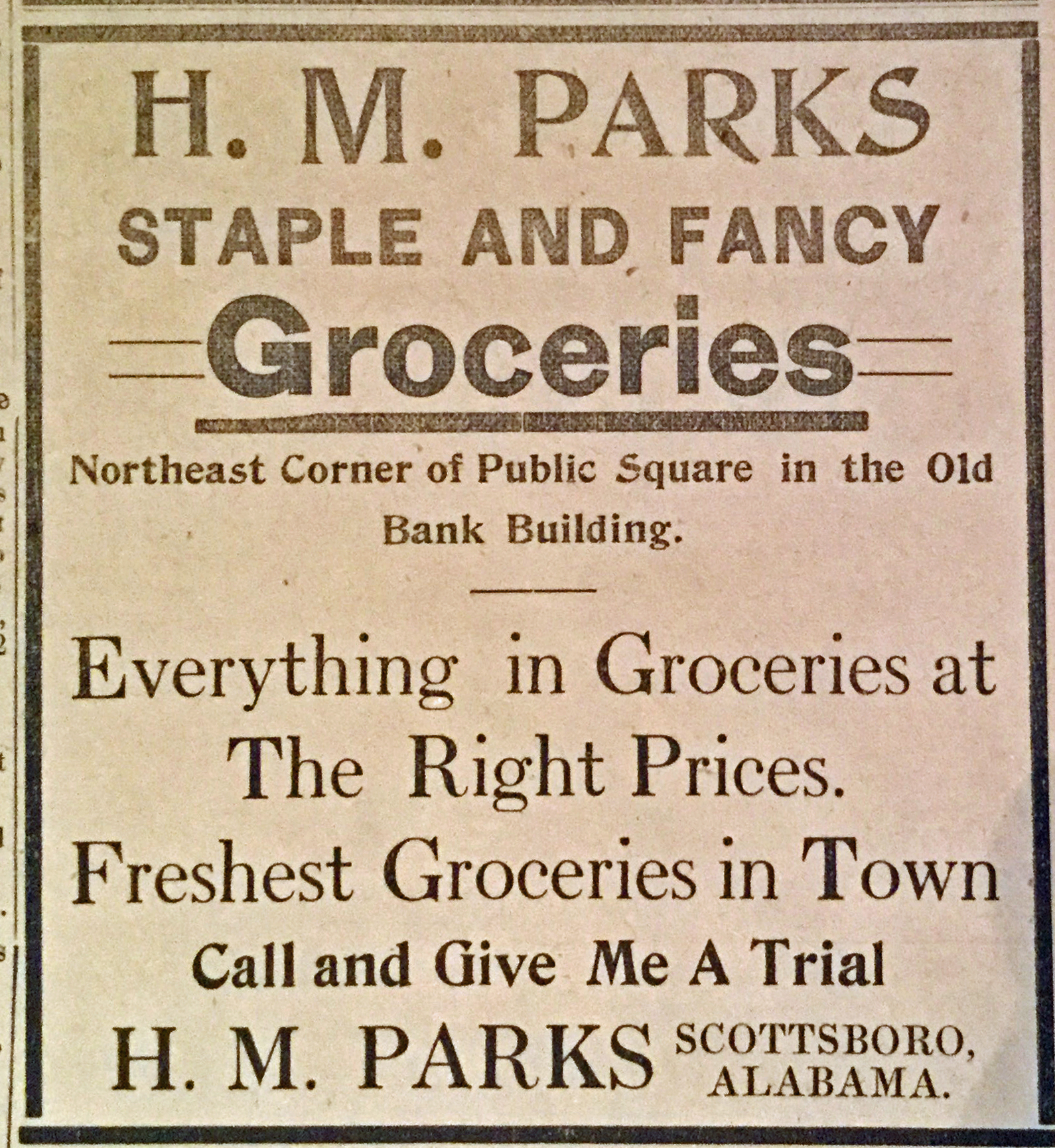
1920s: Matthews House
Martha Hughes contributed a set of photos of her mother and her friends taken in downtown Scottsboro around 1923-24. In the photo below, notice that this young lady (Martha’s mother) is sitting behind one of the markers for the corners of the square, onto which a face has been drawn. Behind her is the Brown Building with the sign “Matthews House,” which seems to be a hotel or rooming house, though no tenants can be found in the 1920 census for the city of Scottsboro.
To the right in this photo, notice the house on the lot that would in 1935 be the location of the Post Office.
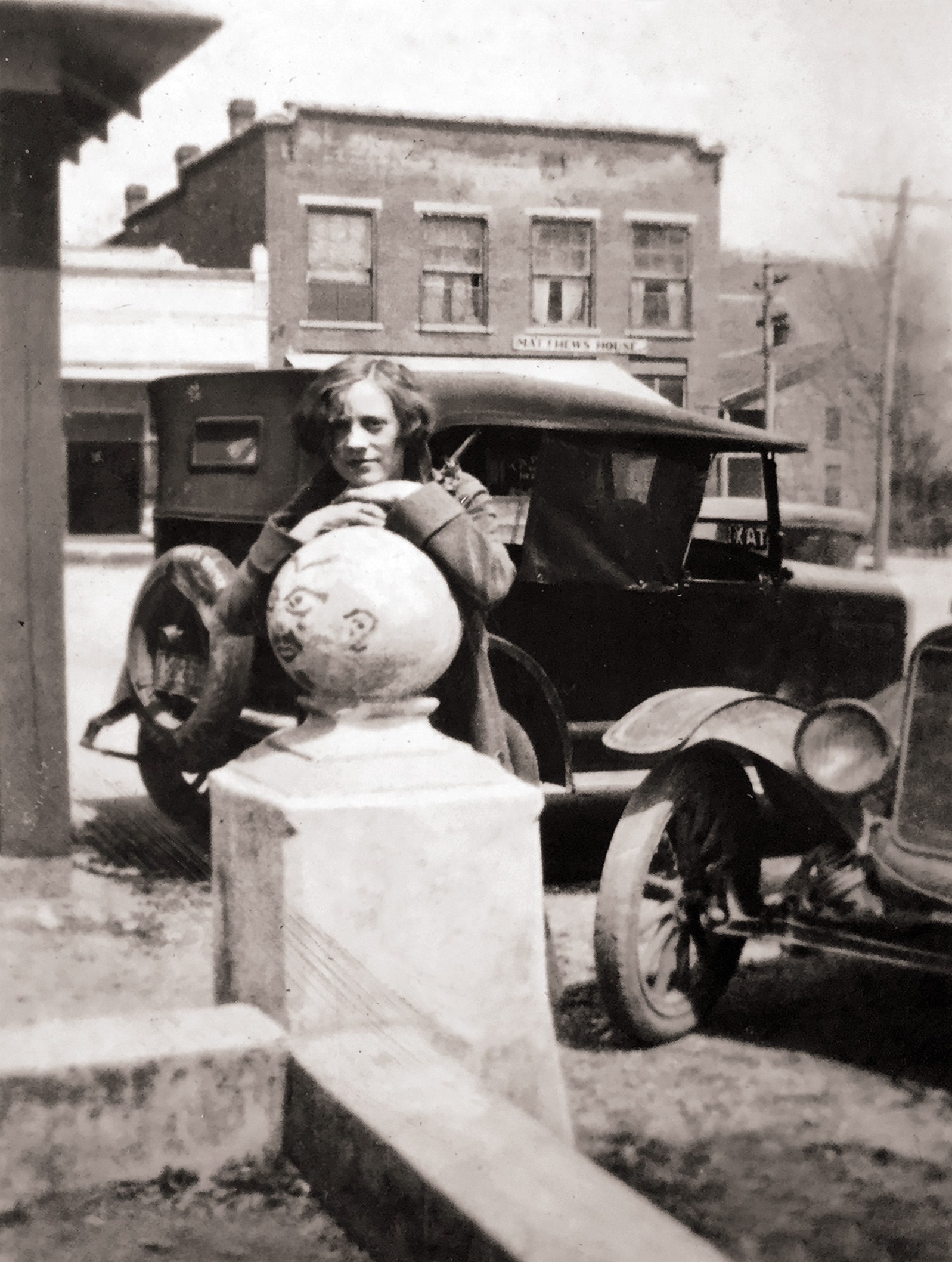
On the left is the Robinson-Brown Building. Since the building currently on this site was built in 1929, we can assume that we are looking at its precursor, a frame building also built by Judge Milton Perry Brown for his daughter Evie Randall Brown Robinson and her husband William James Robinson to operate a grocery and funeral home business. W. J. Robinson died in 1902, and his wife and daughter continued to operate the business in this location for some time after his death, though it is doubtful that this business was still in this location in 1924.
Careful examination of the 1912 photo of the courthouse below that Walt Hammer found shows the bandstand at the front, with the wall and globe structures running around the side, mostly likely a low wall enclosing the entire courthouse lawn, meant to keep wagons and later cars from parking too close to the courthouse.
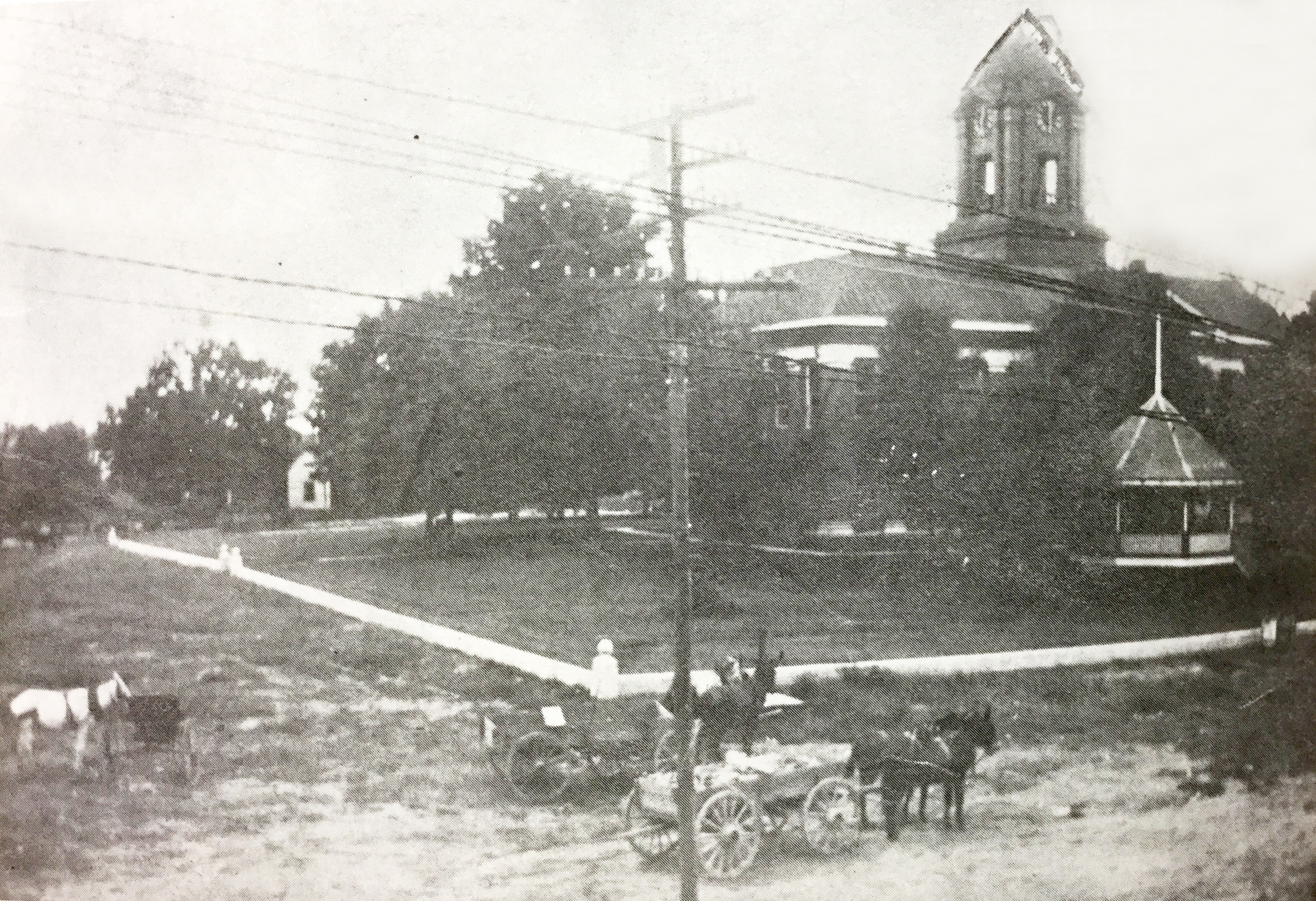
The Hughes photo also shows a structure on the left that intrudes into this photo, which is probably the sulpher well on the north side of the courthouse. This structure is shown in this detail view of Mr. Gist’s 1917 photo of the courthouse in the snow.

A second photo from Mrs. Hughes provides a better view of the building to the left, and some portion of the building just to the left of it.
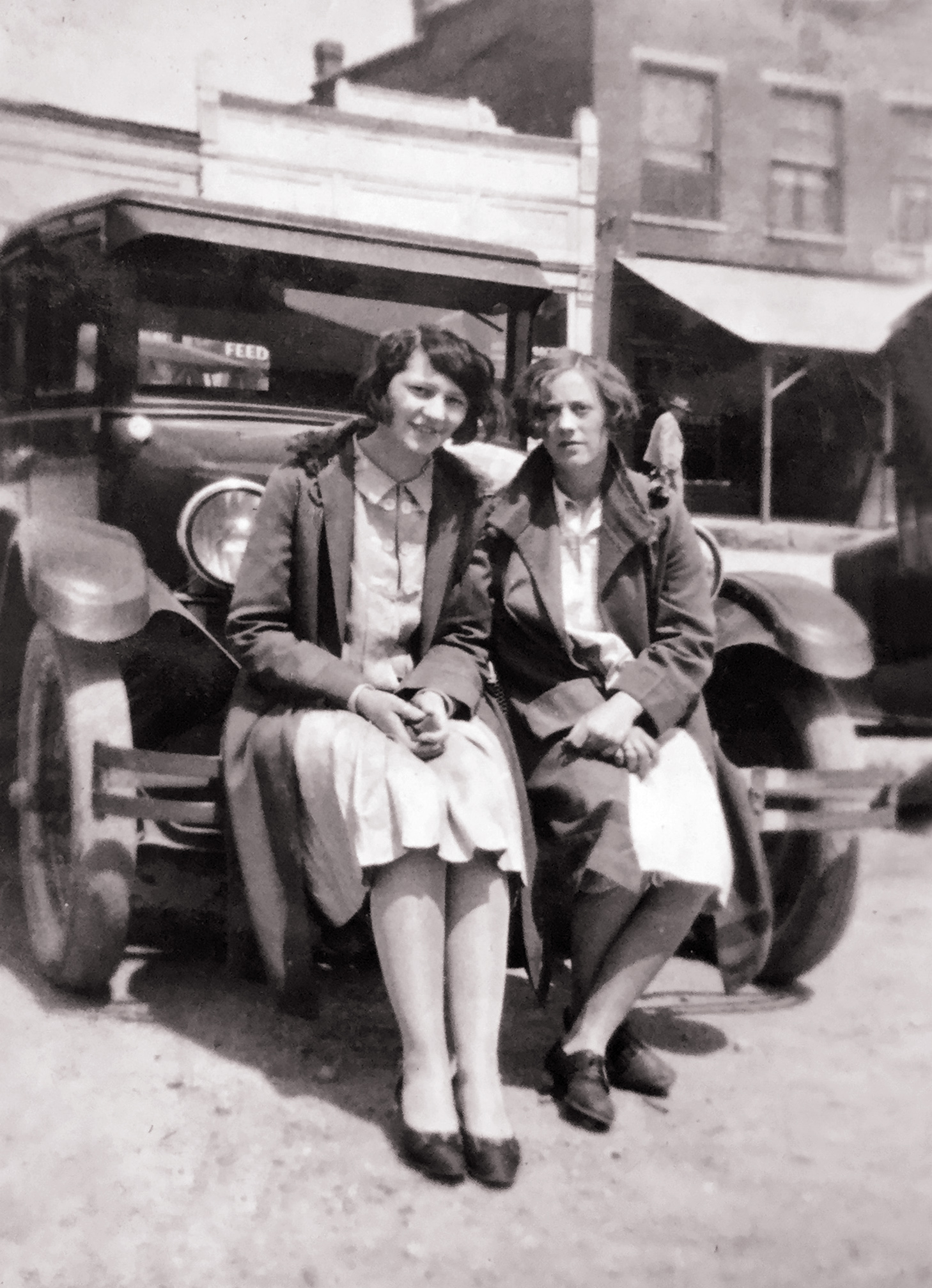
By looking through the back window of the car the girls are sitting on, the word “Feed” can be seen, providing some hint of the tenant of this building in 1924.
Here is another view of this building in the late 1920s showing trucks loaded with cotton bales.
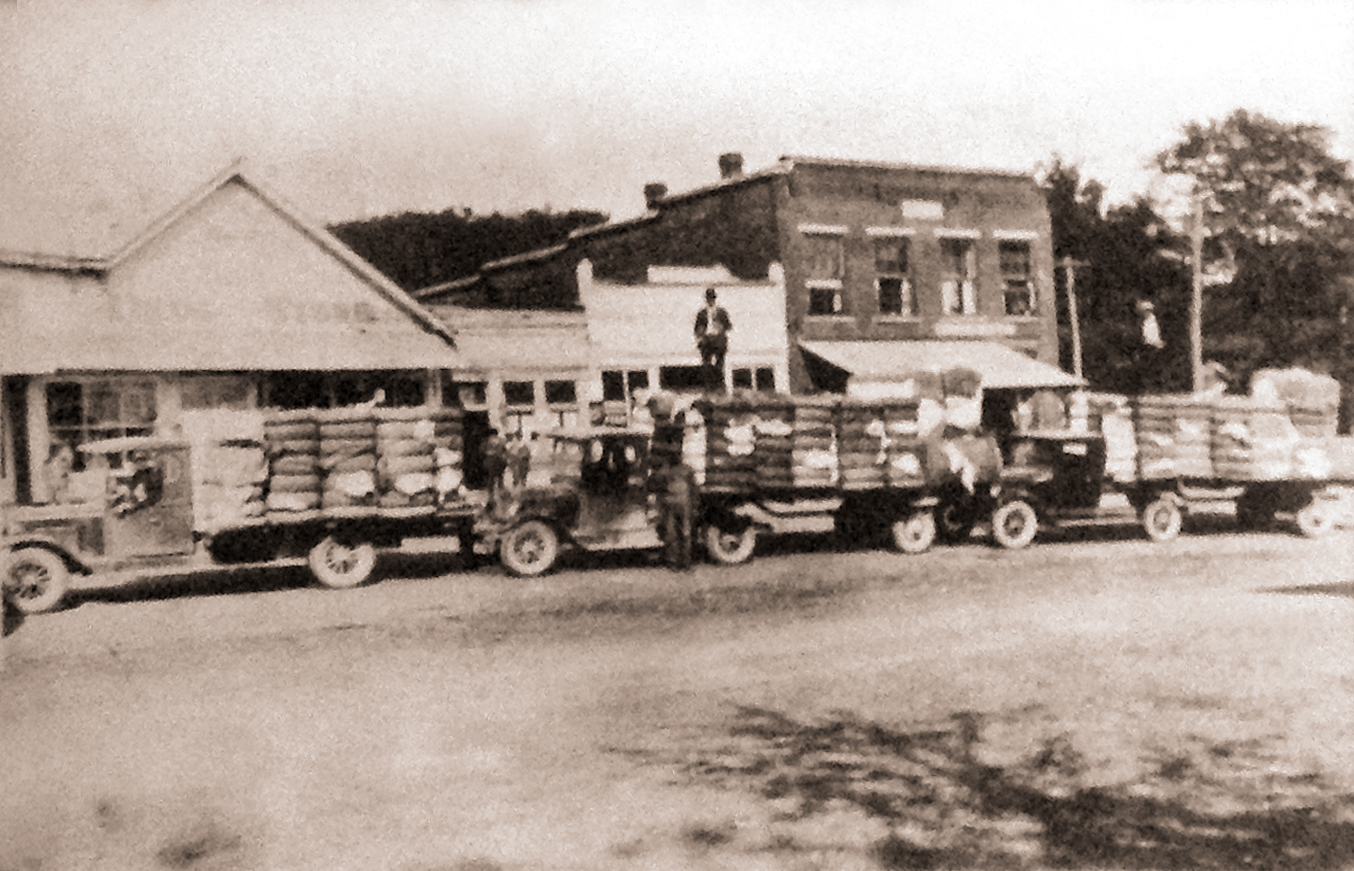
1930s: Jordan and Skidmore and the first hospital
In the 1930 Reminder, the JCHS yearbook, an ad is found for Jordan and Skidmore shoe store (see their ad below). According to Ann Chambless who remembers buying her Easter shoes at this store, partner Jordan left this business and it was simply Skidmore’s for several years. The ad below is from the 1930 yearbook, and the photo below it is from 1939.


In a recent discussion on Facebook, Ann Chambless asked: “Before Dr. Rayford Hodges built the Hodges Hospital building on Laurel Street, he had a small hospital in the second story of a building near the square. Does anyone know if it was located on the second floor of the Brown Building at the corner of Laurel and Broad Street. In the 1960s, the second story of the Brown Building was removed, and it is now a one-story building.” Garry Morgan found this quote from Dr. Durwood Hodges to answer this question: “My grandfather, Dr. Rayford Hodges, started the first hospital with Dr. George E. Nye in 1923 and it was located on the second floor of the Brown Building. The old Hodges Hospital opened in 1925. Dr. Nye sold his interest to my grandfather in 1927 who ran it by himself until it closed in Dec. 1958 after his second heart attack.”
1940s: V.M. Proctor’s Grocery
Mary Presley Cox had among her photos some views of the Brown Building in the early 1940s. In the second of these photos, the word “Proctor’s” written vertically can be read to the right of the Quality Store.
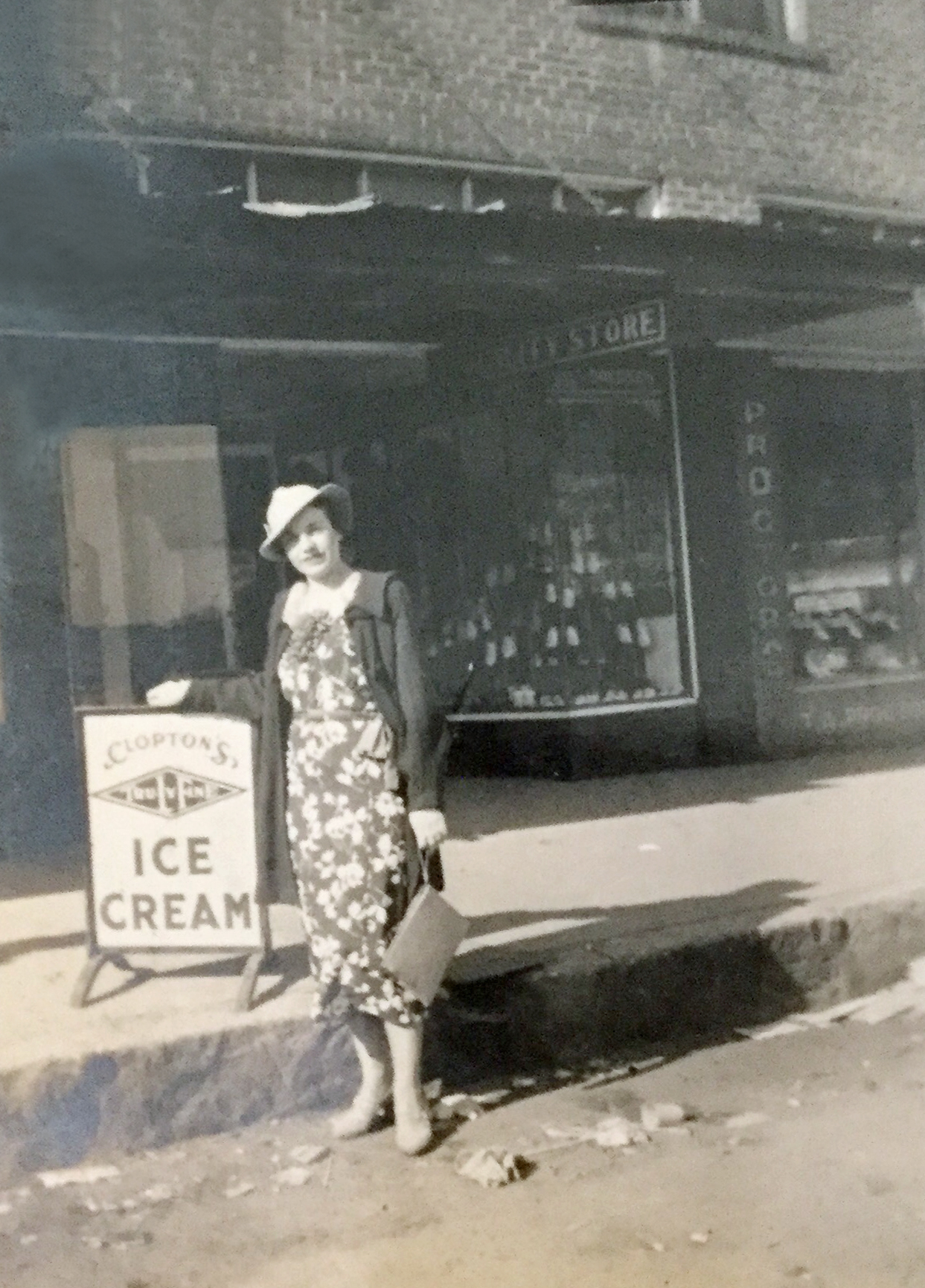
The 1940 Reminder yearbook lists Proctor’s Stable and Fancy Groceries as one of their advertisers.

Here is another early 1940s view of this building from Mrs. Cox’s photos:
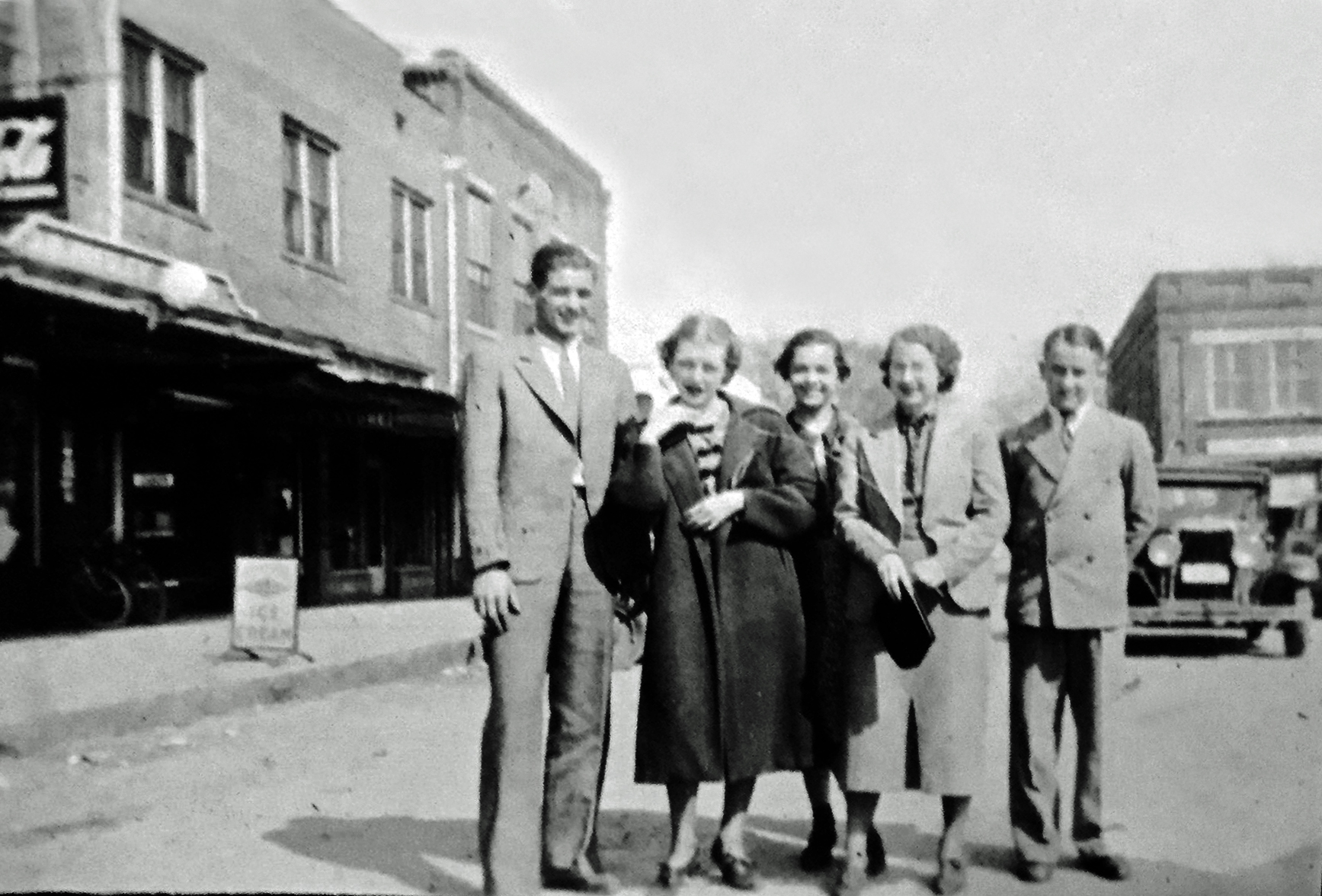
1950s-1960s: Stone’s Department Store
According to the 1956 and 1961 phone books, this building was the home of Stone’s Department Store. Notice that Stone’s is in the Brown Building in the photo below.
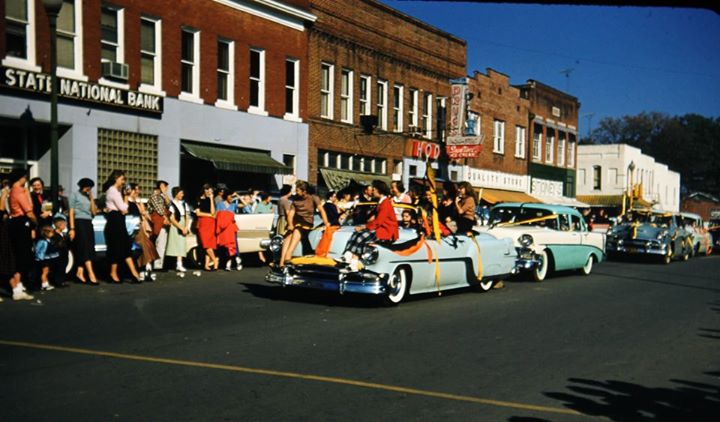
Notice that the Brown Building in the lower left corner of this 1957 aerial view is still two-story.
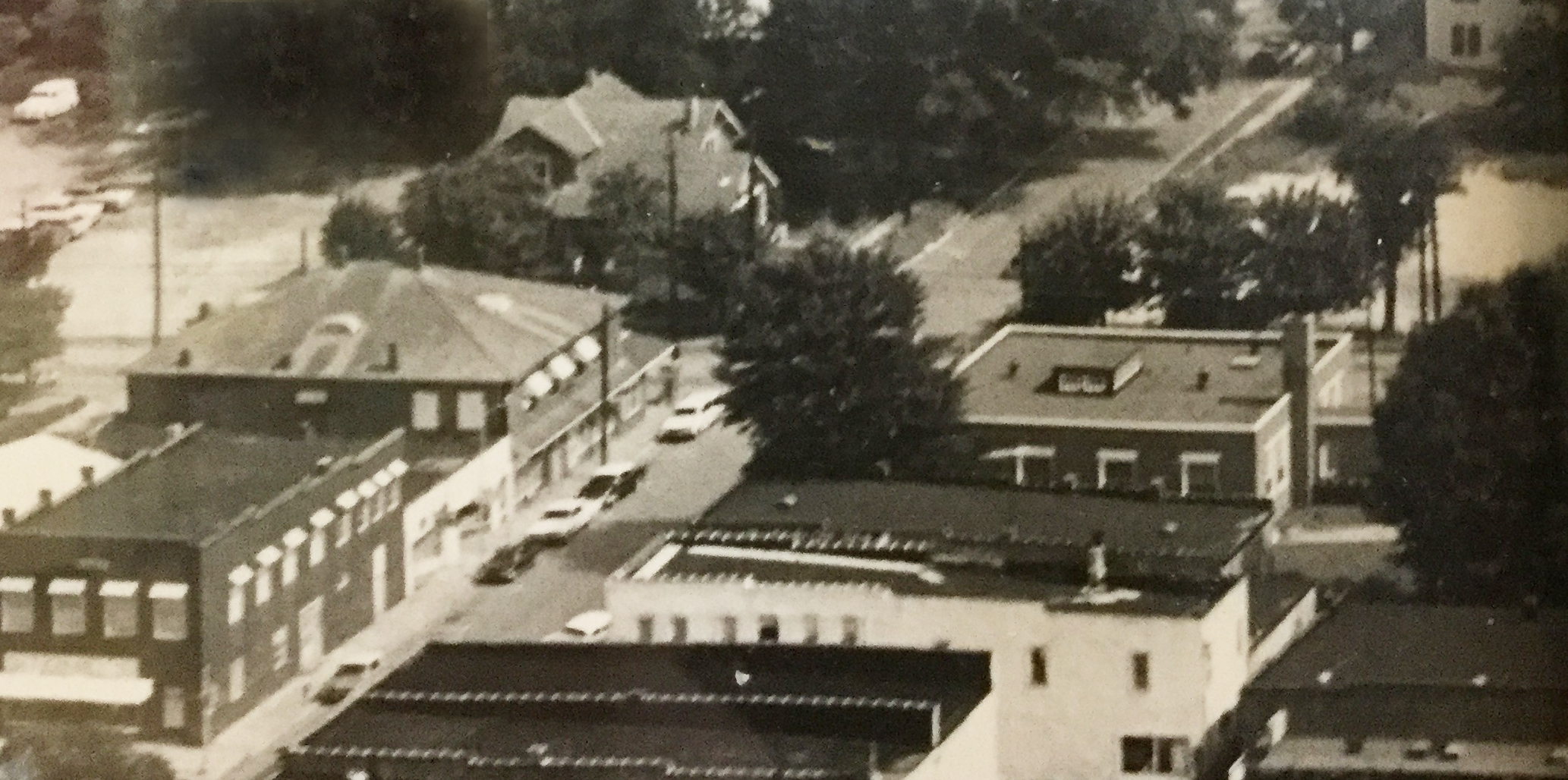
The 1960 city directory finds A. D. Kirby Property Management at 147 in this building, which must be upstairs.
1966 through 1970s: Kennamer’s Clothing
By 1966 and during the 1970s, this space was home to Kennamer’s Clothing Store. For a time starting in 1966, J. S. Liles, Attorney had an office upstairs. Kennamer’s continued at this location at least through 1975.
McDonald “Mack” Kennamer had a lot of experience in the clothing business when he bought this location to open his own store. The brother of Eva Kennamer Parks, who managed The Quality Store with her husband Albert, he had managed two businesses for the W. S. Adams family from Guntersville. According to Bill Parks, the Adams father and son owned the two businesses on the corner of Market and Laurel. W. J. “Jimmy” Adams Jr. ran the Adams Casualette business which, Bill recalls, “had the cool clothes,” the high-end women’s labels like Villager. Darwin’s, owned by W. J. Adams Sr., carried less prestigious brands. W. J. Sr. expanded his line of stores to include Darwin stores in Arab, Albertville, and Guntersville. Jimmy had other Adams stores in Mountain Brook and Decatur, where they are still in business today.
It was Mack Kennamer’s idea to sell school books at Darwin. Bill recalls that before school started in the fall, you could barely go upstairs for all the books stacked on the stair steps.
Watching for his opportunity, Mack Kennamer found it when Stone’s in the Brown Building went out of business. Mack bought their stock and conducted their “going out of business sale” to liquidate their inventory. When this was complete, he sat about to buy the store and renovate it for his use. When the remodeling started, it was found that the building was eaten up with termite damage. City attorney Joe Dawson agreed that all they could do was to tear the historic two-story building down and rebuild in the same spot. This time, they built a one-story building and retained the original plate on the front. When this renovation was complete, he opened Kennamer’s Clothing in this location.
There is still some debate about whether the Brown Building was torn down completely because of termite issues around 1964, or whether the outside shell of the building remained and the inside was rebuilt. If anyone has definitive information about this issue, please contact us.
Here is a photo of Kennamer’s from the TVA survey in 1975.

And here is Kennamer’s familiar shopping bag.
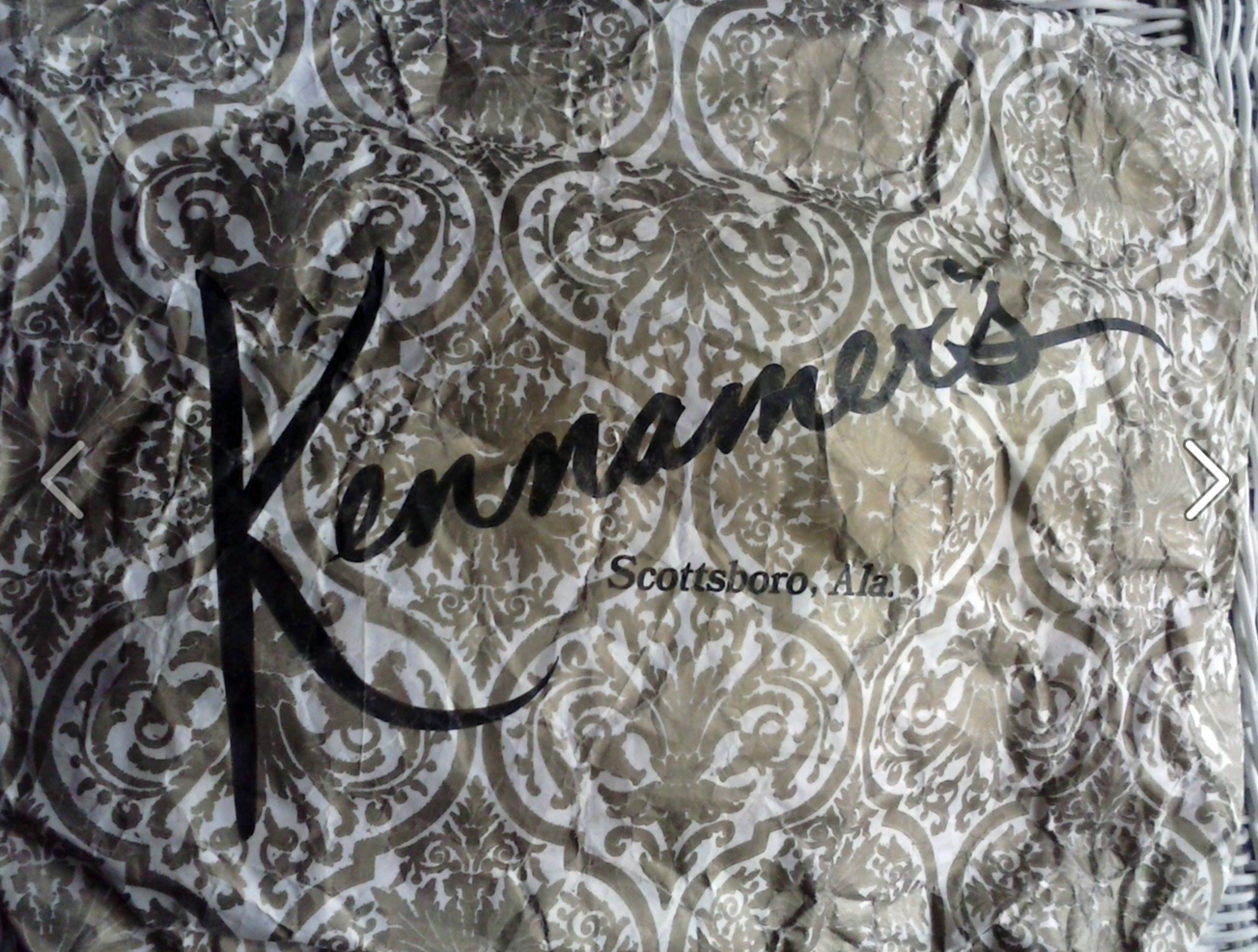
1990s: The Lite Side sandwich shop
In the 1990s, this building housed a sandwich shop named The Lite Side.
2010 Berry and Dunn
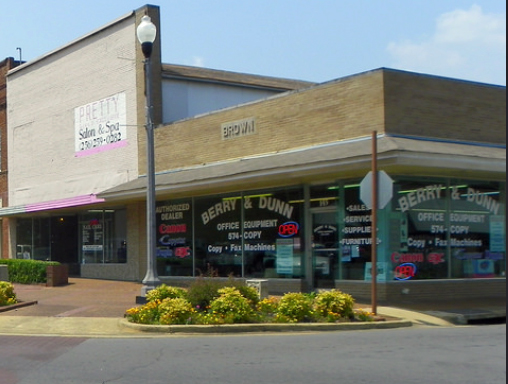
For other views of the Brown Building, see North Side of the Square.
Tales of Kennamers
Nita Price Derrick Farquhar said on Facebook, “My mom worked at Kennamer’s and so did I. I loved Mac and Aline. I’ll bet I wrapped 1000’s of Christmas presents each year. Loved their clothes too. I spent all my paycheck on the clothes!”